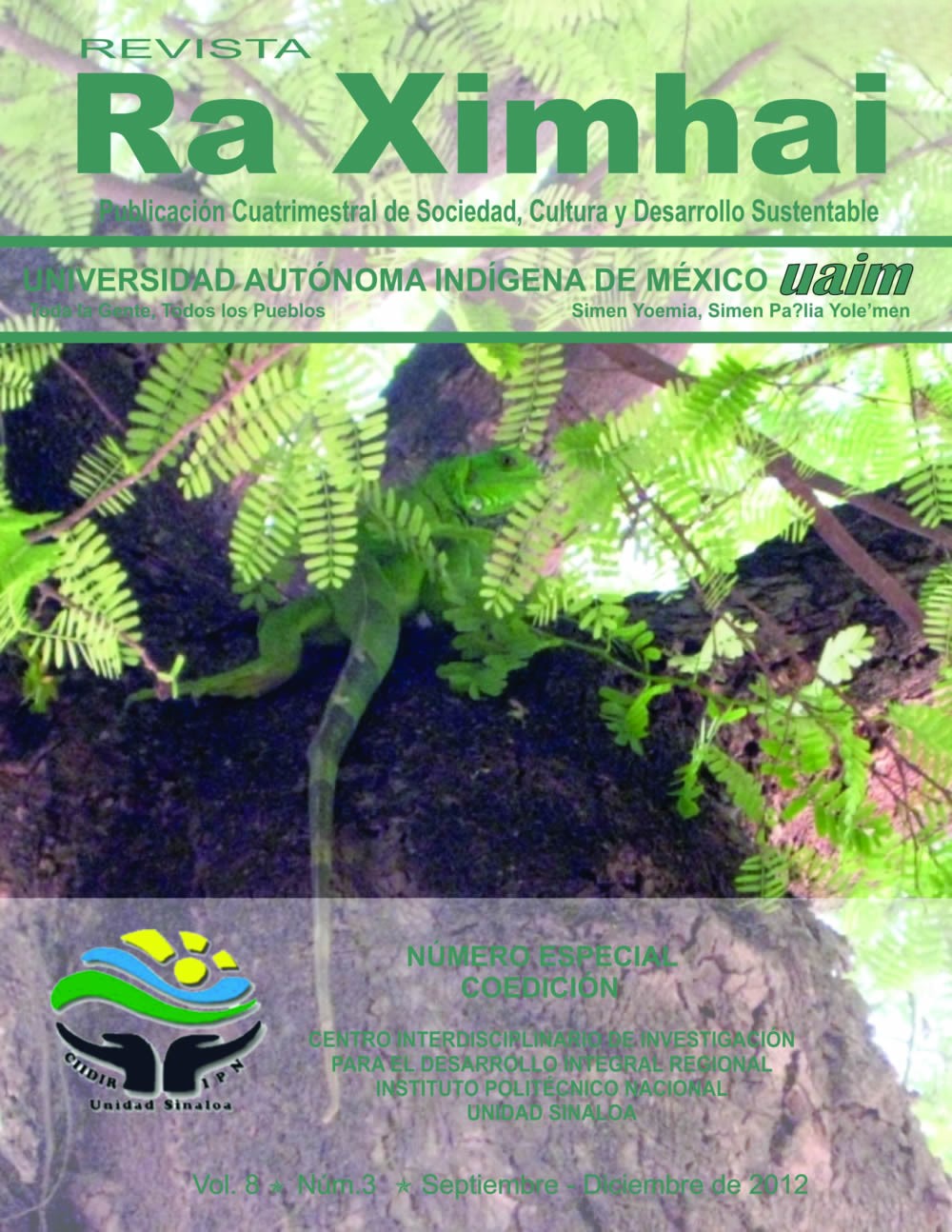Shrimp farming in low salinity water with worm meal-based feed
DOI:
https://doi.org/10.35197/rx.08.03.e2.2012.12.wvKeywords:
Eisenia foetida, Litopenaeus vannameii, worm protein, survival, low salt waterAbstract
Shrimp farming in the state of Sinaloa is one of the main activities in the region, as it generates a large number of jobs and foreign currency each year. Shrimp feeding is an essential part of healthy production. As an initial approach to shrimp growth in low salinity water, two animal protein-based formulas were tested in shrimp feed, with 40% (APL1) and 20% (APL2) of worm protein, one commercial feed and one without supplemental feed. The physical-chemical parameters of the water did not have a direct influence on the behavior of the shrimp. After six weeks of experiment, shrimp fed with the commercial feed had a 20% higher weight gain than those fed with the worm protein. There were no significant differences between sizes between the feed with 40% protein and 20% protein with respect to the commercial feed (P ≥ 0.05). However, shrimp fed with worm protein had a lower mortality. The use of worm protein is an option to maintain high densities of cultured shrimp in low salinity water.
Downloads
References
Chen, H. Y., Zein-Eldin, Z. P., Aldrich, D. 1985. Combinated effect of shrimp size and dietary protein source on the growth of Penaeus setiferus and P. vannamei. World Maricult. Soc. 16: 288-296.
Cho, S. H., S. M. Lee, S. M. Lee y J. H. Lee. 2005. Effect of dietary protein and lipid levels on growth and body composition of juvenile turbot (Scophthalmus maximus L.) reared under optimum salinity and temperature conditions. Aquaculture Nutrition. 11; 235-240.
Cortés-Jacinto, E., H. Villareal-Colmenares, L. E. Cruz-Suárez, R. Civera-Cerecedo, H. Nolasco-Soria and A. Hernández-Llamas. 2005. Effect of different dietary protein and lipids levels on growth and survival of juvenile Australian red claw crayfish, Cherax quadricarinatus (von Martens). Aquaculture Nutrition. 11; 283-291.
Fenucci, J. L., Zein-Eldin, Z. P., Lawrence, A. L. 1980. The nutritional response of two penaeid species to various levels of squid meal in prepared fed. Proc. World Maricult. Soc. 11: 403-409.
García, T., Galindo, J. 1990. Requerimientos de proteína en post larvas de camarón blanco Penaeus schmitti. Rev. Invest. Mar. 11(3): 247-250.
García, T.; Alfonso, E.; y Jaime, B. 1998. Evaluación de la lombriz de tierra Eudrilus eugenia en la alimentación de camarones peneidos. Avances en nutrición acuícola III. pp: 349-361.
Gaxiola, G. 1991. Requerimientos nutricionales en post larvas de Penaeus schmitti: relación proteína/energía y proteína animal/vegetal. Cuba, Universidad de la Habana. Tesis de Maestría. 120 pp.
Gaxiola, G.; García, T.; Jaime, B.; y González, R. 1996. Evaluación de diferentes razones de proteína animal/vegetal en dietas para post larvas de camarón blanco Penaeus scmitti (Burkenroad, 1936). Rev. Invest. Mar. 17(1): 73-84.
Hernández G, G. 1997. Estudios sobre los requerimientos en proteína de juveniles del camarón café
Penaeus californiensis. Tesis de Licenciatura. UABCS, Departamento de Biología Marina. p. 48.
Kim, L. O. and S. M. Lee. 2005. Effects of the dietary and lipid levels on growth and body composition of bagrid catfish, Pseudobagrus fulvidraco. Aquaculture. 243; 323-329.
Lee, P., Smith, L. L., Lawrence, A. L. 1984. Digestive proteases of Panaeus vannamei Boone: relationship between enzyme activity, size and diet. Aquaculture. 42: 225-239.
Miller, C. L., Allen D, D., Phelps, R. P. 2005. The effect of dietary protein and lipid on growth and body composition of juvenile and sub-adult red snapper, Lutjanus campechanus (Poey, 1860). Aquaculture research. 36; 52-60.
Rodríguez-Quiroz, G., Armenta-Bojórquez, A. D., Valenzuela-Quiñónez, W., Camacho-Báez, J. R. y Esparza-Leal, H. M. 2003. Evaluación de sustratos orgánicos para la producción de lombricomposta con Eisenia foetida. Naturaleza y Desarrollo. 1: 1-9.
Smith, D. M., S. J. Tabrett, M. C. Barclay and S. J. Irvin. 2005. The efficacy of ingredients included in shrimp feeds to stimulates intake. Aquaculture Nutrition. 11; 263-272.
Swaminathan, M. 1967. Availability of plant proteins. In: Newer methods of nutritional biochemistry. A. Albanese (ed) N.Y. Acad. Press. 13, 197-241.
Tomás, A., F. de la Gándara, A. García-Gómez, L. Pérez y M. Jover. 2005. Utilization of soybean meal as an alternative protein source in the Mediterranean yellowtail, Seriola dumerili. Aquaculture Nutrition. 11: 333-340.
Vielma-Rondón, R.; Ovalles-Durán, J. F.; León-Leal, A.; Medina, A. 2003. Valor nutritivo de la harina de lombriz Eisenia foetida como fuente de aminoácidos y su estimación cuantitativa mediante cromatografía en fase reversa (HPLC) y derivatización precolumna con o-ftalaldehído (OPA). Ars Pharmaceutica. 44(1): 43-58.
Downloads
Published
How to Cite
Issue
Section
License
Copyright (c) 2012 Wenceslao Valenzuela Quiñónez, Gerardo Rodríguez Quiroz, Héctor Manuel Esparza Leal, Eusebio Nava Pérez

This work is licensed under a Creative Commons Attribution-NonCommercial 4.0 International License.
Usted es libre de:
- Compartir — copiar y redistribuir el material en cualquier medio o formato
- Adaptar — remezclar, transformar y construir a partir del material
- La licenciante no puede revocar estas libertades en tanto usted siga los términos de la licencia
Bajo los siguientes términos:
- Atribución — Usted debe dar crédito de manera adecuada , brindar un enlace a la licencia, e indicar si se han realizado cambios . Puede hacerlo en cualquier forma razonable, pero no de forma tal que sugiera que usted o su uso tienen el apoyo de la licenciante.
- NoComercial — Usted no puede hacer uso del material con propósitos comerciales .
- No hay restricciones adicionales — No puede aplicar términos legales ni medidas tecnológicas que restrinjan legalmente a otras a hacer cualquier uso permitido por la licencia.








